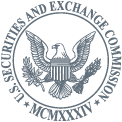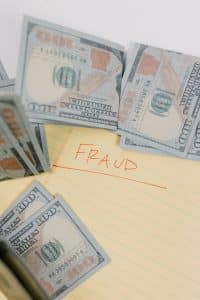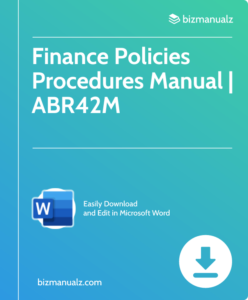What is the Securities Exchange Act of 1934?

The Securities Exchange Act of 1934 is a key law that controls the securities industry in America. It was made to safeguard investors and guarantee the fairness and effectiveness of financial markets. This act created the Securities and Exchange Commission (SEC). What is the securities exchange act of 1934?
The Securities Exchange Act of 1934
They check various sections of the securities industry, such as stock exchanges, broker-dealers, investment advisors, and mutual funds. A unique feature of the Securities Exchange Act of 1934 is its commitment to transparency and disclosure. Companies must register with the SEC and give financial statements and other appropriate information to investors. This makes sure investors have access to precise data when making investment decisions.
To stick to this rule, companies often get auditors to do an independent audit of their financial statements. Auditors examine the company’s records and steps to make sure they follow accounting standards and rules. Investors can use these audits when judging a company’s financial position. By studying audited financial statements, investors can understand a company’s profitability, solvency, and overall performance.
Plus, the Securities Exchange Act of 1934 has provisions to prevent scams in the securities industry. It bans fraudulent activities like insider trading, market manipulation, and misleading statements or omissions. To further protect investors, people involved in offering or selling securities must register with the SEC or qualify for an exemption from registration. This helps guarantee only reliable entities are allowed to offer or sell securities.
Background of the Securities Exchange Act
Congress made the Securities Exchange Act to protect investors and control securities markets in America. This act created the Securities and Exchange Commission (SEC) to watch over and make sure the rules were kept. It was a result of the irregularities and wrong-doings that caused the stock market crash of 1929, leading to tremendous economic struggles.
1920s Stock Market
In the 1920s, stock markets were rising quickly from speculation and too much borrowing. This made an unsteady market situation, with no visibility or regulations. When stocks began dropping rapidly in October 1929, people started to sell out of fear, which caused the stock market crash. This crash triggered the Great Depression, bringing about high unemployment and financial issues for individuals and businesses.
To stop future financial issues and build trust in investors, Congress passed the Securities Exchange Act of 1934. It changed the way securities markets worked significantly. Companies with publicly traded stocks had to disclose information to investors, like financial reports and things that could affect their investments.
Securities Exchange Commission (SEC)
The SEC was given control over companies dealing with securities exchanges, brokers, dealers, and other people involved in buying and selling securities. The SEC’s job is to keep investors safe from fraud and make sure fair trading practices are used. It can investigate possible securities law violations, punish people who violate the law, and make rules for the market people.
Companies must give the SEC periodic reports that have detailed financial information about their business. These reports include yearly and quarterly filings called Form 10-K and Form 10-Q, respectively.
Besides its regulatory functions, the SEC also promotes market transparency through its control of self-regulatory organizations such as FINRA (Financial Industry Regulatory Authority), which watches over broker-dealers.
For improving the effectiveness of the Securities Exchange Act of 1934, there should be increased cooperation between regulatory bodies at the international and national level. With information sharing and joint efforts, regulators can detect and take on cross-border fraud and manipulation better.
Also, stricter penalties for securities law violations should be enforced. Stronger consequences can stop unscrupulous people from doing fraudulent or manipulating activities that can harm investors and weaken market integrity.
Market Trends and Tech Advancements
Moreover, continuous monitoring of current market trends and tech advancements is essential to make sure the act stays applicable in today’s quick financial environment. Regular assessments and updates to regulations can help face new challenges from things like digital assets and online trading platforms.
Overall, the Securities Exchange Act of 1934 is an important base for investor protection and market regulation. By changing with new market conditions, improving regulatory coordination, and executing penalties for violations, it can carry on its mission of making sure fair and transparent securities markets.
Purpose and Scope of the Act
The Securities Exchange Act of 1934 is a key law for regulating the US securities market. It encourages transparency, investor protection and fair practices. The Act sets out rules and regulations for exchanges, brokers and issuers. The Securities and Exchange Commission (SEC) is responsible for enforcing the Act. Penalties are imposed for non-compliance.
The Act affects foreign companies too. It covers businesses listed on US exchanges and those issuing securities to US investors. This protects US investor interests no matter where they invest. Publicly-traded companies must disclose financial, operational and management details regularly. This boosts transparency and helps investors make informed decisions.
The Act was passed in response to the stock market crash of 1929 and the Great Depression. It was created to restore investor trust and stop future market failures. It puts in place disclosure standards, regulates exchanges and brokers, and gives power to regulators like the SEC. Over time, it’s been adapted to changing market dynamics while still maintaining its core objectives.
Key Provisions of the Securities Exchange Act of 1934
The Securities Exchange Act of 1934 is a crucial piece of legislation that regulates the securities industry and protects investors. This act established rules and regulations for the trading of securities, including stocks, bonds, and other investment products, in order to foster fair and transparent markets. To provide a more detailed understanding of the key provisions of this act, let’s present the information in the form of a table:
| Provision | Description |
|---|---|
| Registration of Securities | Requires companies to register any securities they plan to sell with the SEC. |
| Reporting Requirements | Mandates that public companies disclose financial and other information to the public. |
| Prohibition of Insider Trading | Makes it illegal for individuals with access to non-public information to trade securities based on that information. |
| Anti-Fraud Provisions | Ensures that investors are not deceived or misled by fraudulent activities in the securities markets. |
| Proxy Voting and Shareholder Rights | Protects shareholders’ rights and establishes regulations for proxy voting. |
| Regulation of Exchanges | Provides oversight and regulation of securities exchanges to maintain fair and orderly markets. |
| Enforcement Powers | Grants the Securities and Exchange Commission (SEC) the authority to enforce the act’s provisions and regulations. |
In addition to these key provisions, the Securities Exchange Act of 1934 also established the Securities and Exchange Commission (SEC) as the primary regulatory authority for the securities industry. The SEC has the power to bring enforcement actions against individuals or companies that violate the act’s provisions, ensuring accountability and maintaining market integrity.
It is imperative for investors, companies, and market participants to adhere to the regulations set forth by the Securities Exchange Act of 1934. Compliance with these provisions not only promotes transparency and fairness in the market but also provides investors with the confidence and protection they need to participate in the securities industry.
Don’t miss out on the opportunity to fully understand and comply with the key provisions of the Securities Exchange Act of 1934. By doing so, you can navigate the securities markets confidently and avoid potential legal consequences.
Stay informed and stay ahead in this ever-changing landscape of investment opportunities. If you think dodging taxes is hard, try dodging the SEC’s registration and reporting requirements — it’s like playing hide and seek with a team of auditors.
Registration and Reporting Requirements
The key provisions of Registration and Reporting Requirements are summarized in the following table.
| Provision | Description |
|---|---|
| Registration | Companies must register with the SEC if their securities are traded on any national securities exchange. |
| Annual Reports | Registered companies must file annual reports, including audited financial statements, management discussions and analysis. |
| Quarterly Reports | Companies must submit quarterly reports with condensed financial statements and updates on material changes. |
| Insider Trading Forms | Officers, directors and other insiders must disclose their transactions in company securities through filing forms. |
Additionally, companies must disclose information about their business operations, executive compensation, shareholder meetings, and more. The SEC uses this data to protect investors by ensuring fair disclosure practices.
To comply with the Registration and Reporting Requirements, companies should consider a few suggestions:
- Timely Filing: Companies must file all registration documents and reports within the specified deadlines to avoid penalties and legal issues.
- Robust Internal Control Systems: Establishing strong internal controls ensures accurate reporting of financial information and prevents fraud or misrepresentation. Audits can help identify potential compliance gaps.
- Compliance Training: Training programs for employees about the regulations governing registration and reporting requirements promote awareness and foster understanding of their responsibilities.
By adhering to these suggestions, companies can comply with the Registration and Reporting Requirements easily. Compliance with these provisions fosters transparency, builds investor confidence, and contributes to the overall integrity of the financial markets.
Regulation of Securities Exchanges
The Securities Exchange Act of 1934 has certain provisions to ensure exchange integrity and stability. These provisions aim to protect investors from fraud and enable fair and transparent practices. Here are key aspects of the regulation:
- Registration: Exchanges must be registered with the SEC to legally operate.
- Self-Regulatory Orgs (SROs): Exchanges can set up SROs to enforce exchange rules.
- Listing Standards: Exchanges set requirements for companies listing securities.
- Market Surveillance: Exchanges scrutinize markets to spot manipulative or illegal trades.
- Reporting: Companies must give investors timely financial info.
- Inspections: Exchanges do regular inspections to monitor compliance.
Regulatory bodies and market players both contribute to efficient markets and investor confidence. Pro Tip: Market participants should stay informed about exchange regulations to make wise investments and avoid risks.
Prevention of Fraud and Manipulation
The Securities Exchange Act of 1934 has a critical aspect: Fraud and Manipulation. It has a significant role in keeping the financial markets intact. Its goal is to safeguard investors from deceptive practices and make sure fair trading.
Let’s analyze the key provisos of this heading. Here’s a table:
| Provision | Description |
|---|---|
| Prohibition against fraud | This stops anyone from doing fraudulent activities, like misrepresenting or omitting vital facts. |
| Insider trading restrictions | Prevents those with access to secret info from using it to their benefit. |
| Market manipulation prohibition | Prevents actions that manipulate prices or create an artificial market for securities. |
| Reporting requirements | Companies are required to give precise, timely information of financial statements and other details. |
Apart from these provisions, the Act also deals with several types of fraudulent activities. It ensures transparency, investor protection, and market efficiency.
The Sarbanes-Oxley Act (SOX) was introduced in 2002 after major corporate scandals like Enron and Worldcom, which caused serious investor losses due to accounting problems. The SOX Act had stricter reporting standards and increased punishments for financial misconduct. It was to restore investor trust and strengthen corporate governance.
By having the Securities Exchange Act’s provisions, like those above, and more regulations like SOX, regulators are dedicated to preserving fair markets and protecting investors from fraud.
Impact and Legacy of the Securities Exchange Act of 1934
The Securities Exchange Act of 1934 had a profound impact and left a lasting legacy on the financial landscape. Its implications were far-reaching, shaping the regulation of securities trading and fostering transparency in the markets.
To better understand the impact and legacy of the Securities Exchange Act of 1934, let’s delve into its key provisions and the changes it brought about.
Table:
| Provisions | Description |
|---|---|
| Vesting | Established the U.S. Securities and Exchange Commission (SEC) to regulate and oversee securities markets. |
| Reporting | Required companies to disclose financial information regularly, improving transparency for investors. |
| Market Regulation | Authorized the SEC to enforce rules regarding securities trading and address illegal activities such as insider trading and market manipulation. |
| Investor Protection | Provided safeguards for investors by prohibiting fraudulent practices and requiring brokers to act in their clients’ best interests. |
| Exchanges | Implemented regulations for stock exchanges, promoting fair trading practices and maintaining market integrity. |
These provisions played a pivotal role in regulating the securities market, protecting investors’ interests, and promoting fair trading practices. By establishing the SEC, the act created a centralized authority responsible for overseeing and enforcing regulations in the financial industry.
Furthermore, the act mandated regular reporting of financial information by companies, enabling investors to make informed decisions based on accurate and up-to-date data. This requirement significantly enhanced transparency in the markets.
The act also empowered the SEC to regulate trading activities, cracking down on illegal practices such as insider trading and market manipulation. This increased regulatory oversight helped maintain market integrity and fostered a level playing field for all participants.
In addition, the act emphasized investor protection by prohibiting fraudulent practices and ensuring brokers acted in the best interests of their clients. This provision aimed to instill trust and confidence in the securities market.
Unique Detail: The Securities Exchange Act of 1934 laid the foundation for modern securities regulation in the United States, setting the stage for subsequent legislation aimed at further protecting investors and maintaining market integrity.
True Fact: According to the SEC, the Securities Exchange Act of 1934 was enacted in response to the stock market crash of 1929 and subsequent financial turmoil.
An agency so powerful, it makes babysitting a tornado look like child’s play.
Creation of the SEC
The Securities and Exchange Commission (SEC) was established through the Securities Exchange Act of 1934. It is tasked with enforcing securities laws, protecting investors, and sustaining fair and efficient markets.
This event brought about huge changes in the financial sector. Let’s take a look at some key aspects:
| Role of the SEC | Impact |
|---|---|
| Regulatory Powers | The SEC was granted power to inspect and commence legal actions against people or firms that break securities laws. |
| Investor Protection | The SEC is essential for preserving investors’ interests by ensuring precise disclosure of financial info and supporting transparency. |
| Market Surveillance | The SEC screens activities within the securities market to identify potential unlawful activities such as insider trading or market manipulation. |
It’s also worth noting that the SEC monitors self-regulatory organizations (SROs), such as stock exchanges, to regulate their members.
One remarkable episode that shows the importance of the SEC’s regulatory efforts came about in the early 2000s. The SEC played a massive role in discovering accounting frauds at Enron and WorldCom which led to massive investor losses and contributed to a loss of public trust in corporate America.
Though troubles remain, like staying ahead of changing market conditions and addressing emerging issues such as cyber threats, the introduction of the SEC has had an enduring effect on the securities market, paving the way for more investor protection and market integrity.
Evolution of Securities Regulation
Securities regulation has seen impressive transformation and progress during the years. From the making of the Securities and Exchange Commission (SEC) in 1934 to the introduction of pivotal laws such as the Securities Act of 1933 and the Sarbanes-Oxley Act of 2002, regulatory structures have advanced to guarantee investor security and stimulate equitable markets.
For a better understanding of the evolution of securities regulation, let us check out a table that highlights remarkable regulations over time:
| Year | Regulation |
|---|---|
| 1929 | Stock Market Crash |
| 1933 | Securities Act |
| 1934 | Securities Exchange Act |
| 1940 | Investment Company Act |
| 1970 | Foreign Corrupt Practices Act |
| 2002 | Sarbanes-Oxley Act |
These regulations were formed with particular objectives in mind. For example, the Securities Act of 1933 centered on increasing transparency in issuing new securities by having firms register their offerings with the SEC. Furthermore, the Securities Exchange Act of 1934 focused on regulating secondary market trading and creating reporting conditions for public companies.
It is significant that one important element covered by these regulations is insider trading. The prohibition of insider trading holds a crucial spot in maintaining market stability and preserving investor benefits. According to a CNBC report, despite regulatory endeavors, insider trading remains a concern.
Looking at the evolution of securities regulation, it is clear that its effect exceeds individual investors. The making of regulatory structures has had far-reaching effects on financial markets, shielding investors from deceitful acts and making sure a level playing field.
Altogether, securities regulation has gone through remarkable changes over the years, reacting to arising obstacles and progresses in technology. These regulations keep on forming the financial environment, adding to steadiness and fairness in investment methods.
Securities Exchange Act of 1934
The Securities Exchange Act of 1934 is a key law that oversees the securities industry in the U.S. It’s main purpose is to protect investors, ensure fair and open markets and facilitate capital formation.
This act set up the SEC – the U.S. Securities and Exchange Commission. They monitor different entities like stock exchanges, brokers, investment advisors and mutual funds.
It requires publicly-traded companies to regularly disclose information to investors, so they can make wise decisions.
The act prohibits fraudulent activities in the securities market. It also grants the SEC the authority to take legal action against people or groups that are involved in fraud, such as insider trading or manipulation.
The reason this act was created is due to the Great Depression. After the stock market crash of 1929, investors and the economy as a whole suffered greatly. Congress then enacted this law in 1934 to restore investor trust and promote stability in the financial markets.
Frequently Asked Questions
 Q: What is the Securities Exchange Act of 1934?
Q: What is the Securities Exchange Act of 1934?
A: The Securities Exchange Act of 1934 is a federal law that regulates transactions in securities, including stock transactions, on the secondary market.
Q: What is the purpose of the Securities Exchange Act of 1934?
A: The main purpose of the Securities Exchange Act of 1934 is to promote fair and transparent trading practices, protect investors, and ensure the integrity of the securities market.
Q: What are some key provisions of the Securities Exchange Act of 1934?
A: Some key provisions of the Securities Exchange Act of 1934 include requiring companies to register with the Securities and Exchange Commission (SEC), providing regular financial disclosures, prohibiting fraudulent activities, and regulating securities exchanges and brokers.
Q: Who enforces the Securities Exchange Act of 1934?
A: The Securities and Exchange Commission (SEC) is responsible for enforcing and implementing the provisions of the Securities Exchange Act of 1934.
Q: How does the Securities Exchange Act of 1934 protect investors?
A: The Securities Exchange Act of 1934 protects investors by requiring companies to disclose relevant information about their operations, financial condition, and any material changes that may impact the value of the securities they offer. It also regulates insider trading and imposes civil and criminal penalties for fraudulent activities.
Q: Are all companies required to comply with the Securities Exchange Act of 1934?
A: No, not all companies are required to comply with the Securities Exchange Act of 1934. Generally, companies that have more than a certain number of shareholders and meet certain asset thresholds are required to register with the SEC and comply with the Act’s provisions.
















Leave a Reply